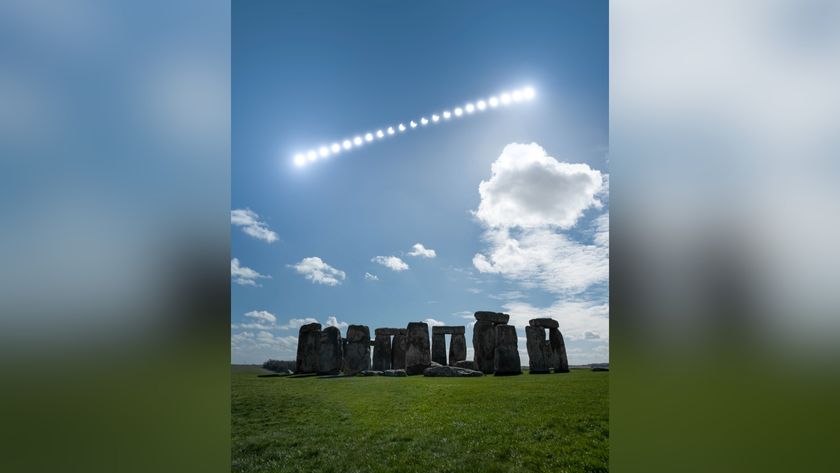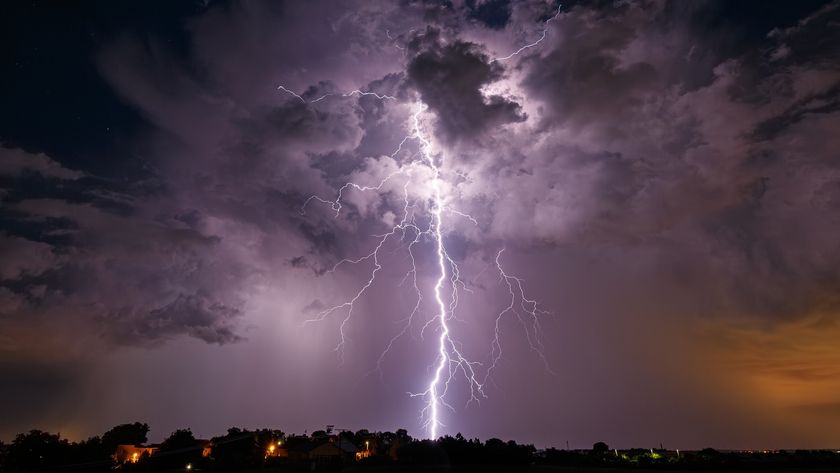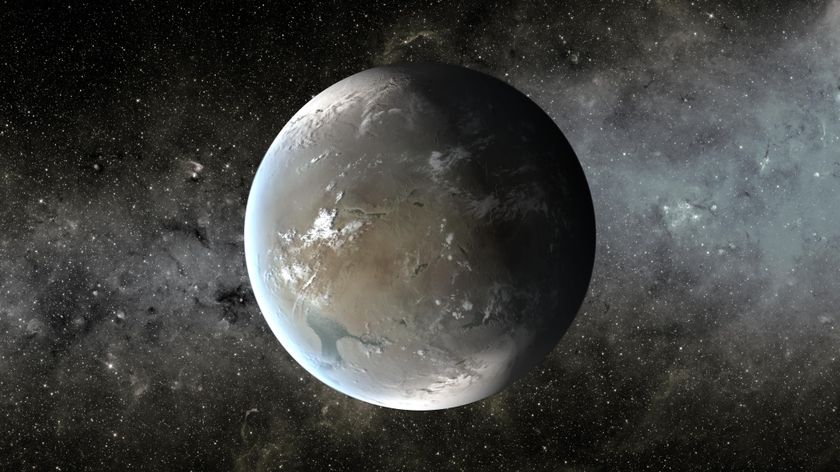Some Ancient Galaxies Had Wild Youth
Ancient galaxiesmay be cosmic senior citizens today, but some have a wild streak in their past,one packed with frenetic star birth, astronomers say.
Researchers using NASA's Spitzer Space Telescope have found that a significant setof galaxies in an ancient, distant cluster were actively forming stars about 10billion years ago, which is how long it's taken for their light to reach Earth.[Photo of the galaxy cluster.]
The starbirthrate is also oddly higher in the cluster's center than at its edges - theopposite of what has been observed in our local part of the universe, where galacticclusters are full of massive elliptical galaxies packed with only old stars.
Missinglink of galaxies?
The recent discovery, made by an international team of researchers led byKim-Vy Tran of Texas A&M University, may ultimately reveal more about howsuch massive galaxies form.
Astronomers havelong suspected that star formation likely peaked long, long ago, when theuniverse was just a few billion years old. But the new findings may help pinpointthe epoch when galaxyclusters were making the last of their stars. Armed with this information, astronomerscould focus on understanding why massive assembliesof galaxies transition from very active to passive.
"Ourstudy shows that by looking farther into the distant universe, we have revealedthe missing link between the active galaxies and the quiescent behemoths thatlive in the local universe," Tran said in a statement.
Get the Space.com Newsletter
Breaking space news, the latest updates on rocket launches, skywatching events and more!
Wildyouths for old galaxies
Tran and her team spent four months analyzing images taken by Spitzer of adistant galaxy cluster known as CLG J02182-05102 about 10 billion light-yearsfrom Earth. The team determined that the galaxy cluster produces hundreds tothousands of new stars every year.
That's afar higher birth rate than what is seen in galaxies relatively nearby.
Exactlywhy the star-making power increases as galaxies become more crowded remains amystery.
Tran suspectsthe densely populated surroundings could lead to galaxies triggering activityin one another, or that all galaxies were extremely active when the universewas young.
The factthat Tran's team was able to see these active galaxies so far back in time isonly the preface to what they expect eventually to learn about these clusters.Tran will continue to lead an international collaboration to examine theseclusters more thoroughly.
"Wewill analyze new observations scheduled to be taken with the HubbleSpace Telescope and Herschel Space Telescope to study these galaxies morecarefully to understand why they are so active," Tran said. "We willalso start looking at several more distant galaxy clusters to see if we findsimilar behavior."
Theresearch was detailed in the Aug. 20 issue of The Astrophysical JournalLetters.
- Images:Amazing Galaxies
- Top 10Star Mysteries
- StarburstGalaxy Unleashes Gassy 'Superwind'
Join our Space Forums to keep talking space on the latest missions, night sky and more! And if you have a news tip, correction or comment, let us know at: community@space.com.

Space.com is the premier source of space exploration, innovation and astronomy news, chronicling (and celebrating) humanity's ongoing expansion across the final frontier. Originally founded in 1999, Space.com is, and always has been, the passion of writers and editors who are space fans and also trained journalists. Our current news team consists of Editor-in-Chief Tariq Malik; Editor Hanneke Weitering, Senior Space Writer Mike Wall; Senior Writer Meghan Bartels; Senior Writer Chelsea Gohd, Senior Writer Tereza Pultarova and Staff Writer Alexander Cox, focusing on e-commerce. Senior Producer Steve Spaleta oversees our space videos, with Diana Whitcroft as our Social Media Editor.











